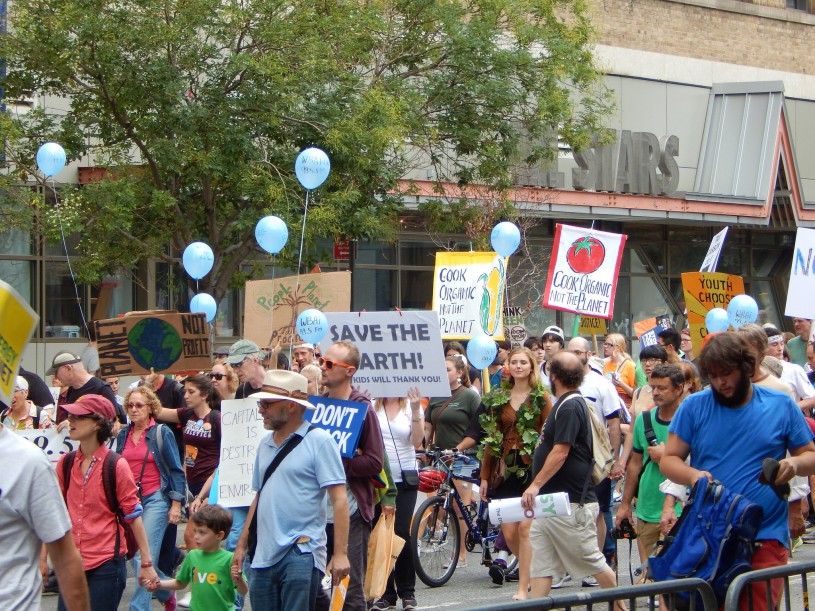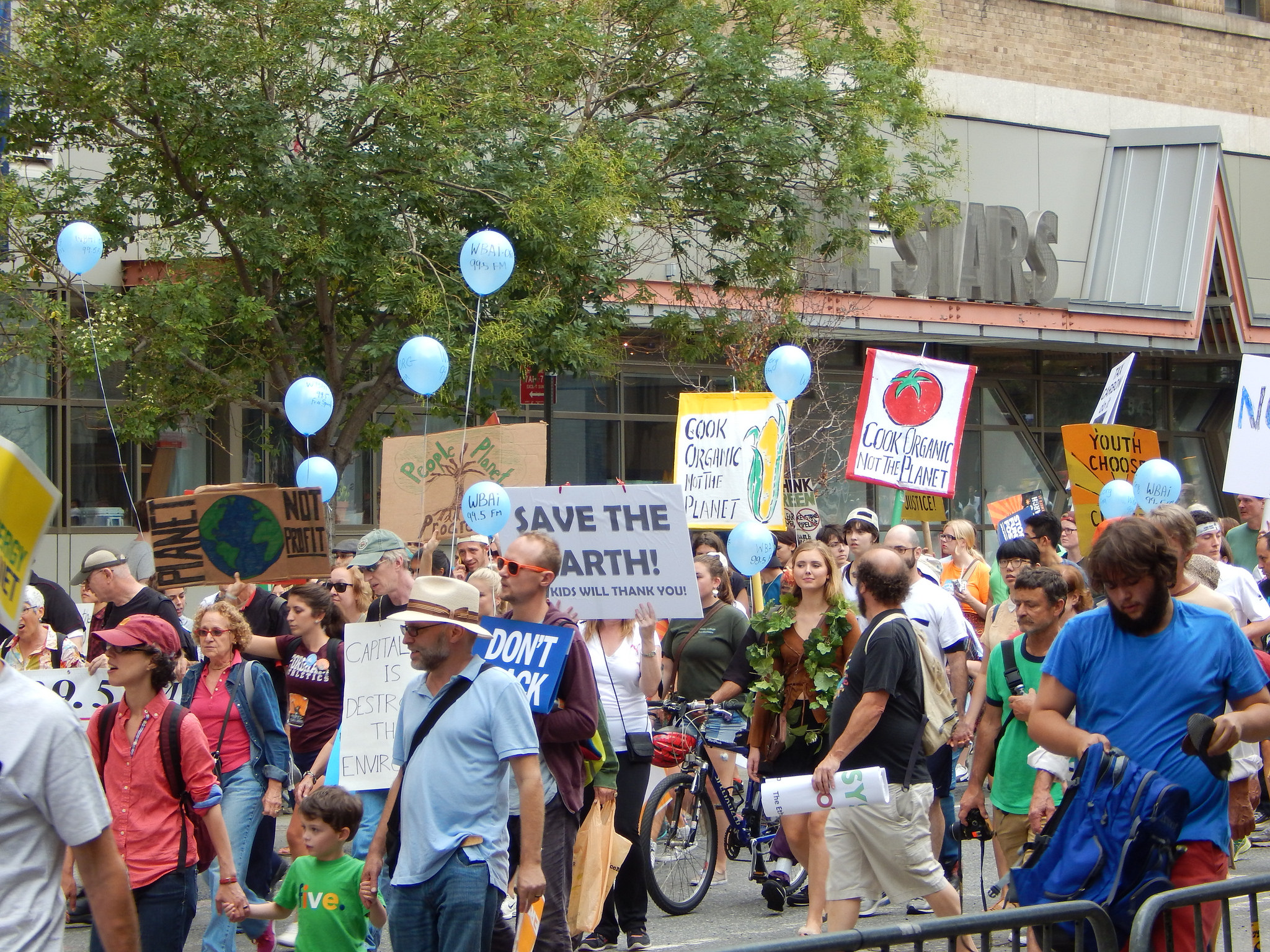
(Photo: Taymaz Valley/Flickr)
The People’s Climate March, where an estimated 400,000 protesters rallied in New York City in support of climate change prevention, offered a once-in-a-lifetime opportunity to experience the vast breadth of issues related to climate change and the diverse array of communities it would impact if left unchecked.
I joined the march because I care about the particular connection between climate change and our food supply. The way we feed ourselves is a vital aspect of our society and our culture — but the unfortunate reality is that the entire food production sector is one of the biggest causes of climate change. Processing, transporting, packaging, and refrigerating food contribute to at least 15% of the overall greenhouse gas emissions, with livestock production alone taking another sizeable chunk.
Coincidentally, this sector is also directly impacted by some of global warming’s worst affects. Climate change is already reducing the availability of fresh water and disturbing seasonal cycles. It’s hurting people’s ability to feed themselves, leading to displacement and raising the numbers of people living in conditions of malnutrition or starvation .
Worst of all, poor countries and communities — which have done little to contribute to the global climate mess — are and will continue to feel the brunt of the consequences. The impact of climate change on our food supply will only exacerbate existing inequalities in access to resources for these communities.
The sheer scale of the climate crisis will constrain and diminish our ability to grow food – unless we change almost everything. It has become evident, however, that systemic change is not likely bound to come from above. It will have to be built from the bottom up, by everyone, together.
The scale of mobilization required is massive, but as the People’s Climate March shows, a cross-cutting movement is indeed growing to combat the present unequal and polluting system. The climate movement is becoming increasingly interdisciplinary, multi-issue, and colorful. And moving forward, all kinds of participants — from trade unions to student associations, environmental organizations to faith congregations — will continue to be needed.
Climate change is likely the biggest challenge of this century. It will touch every person on this planet — which is why everyone can, and should, get involved and contribute to its solutions.
